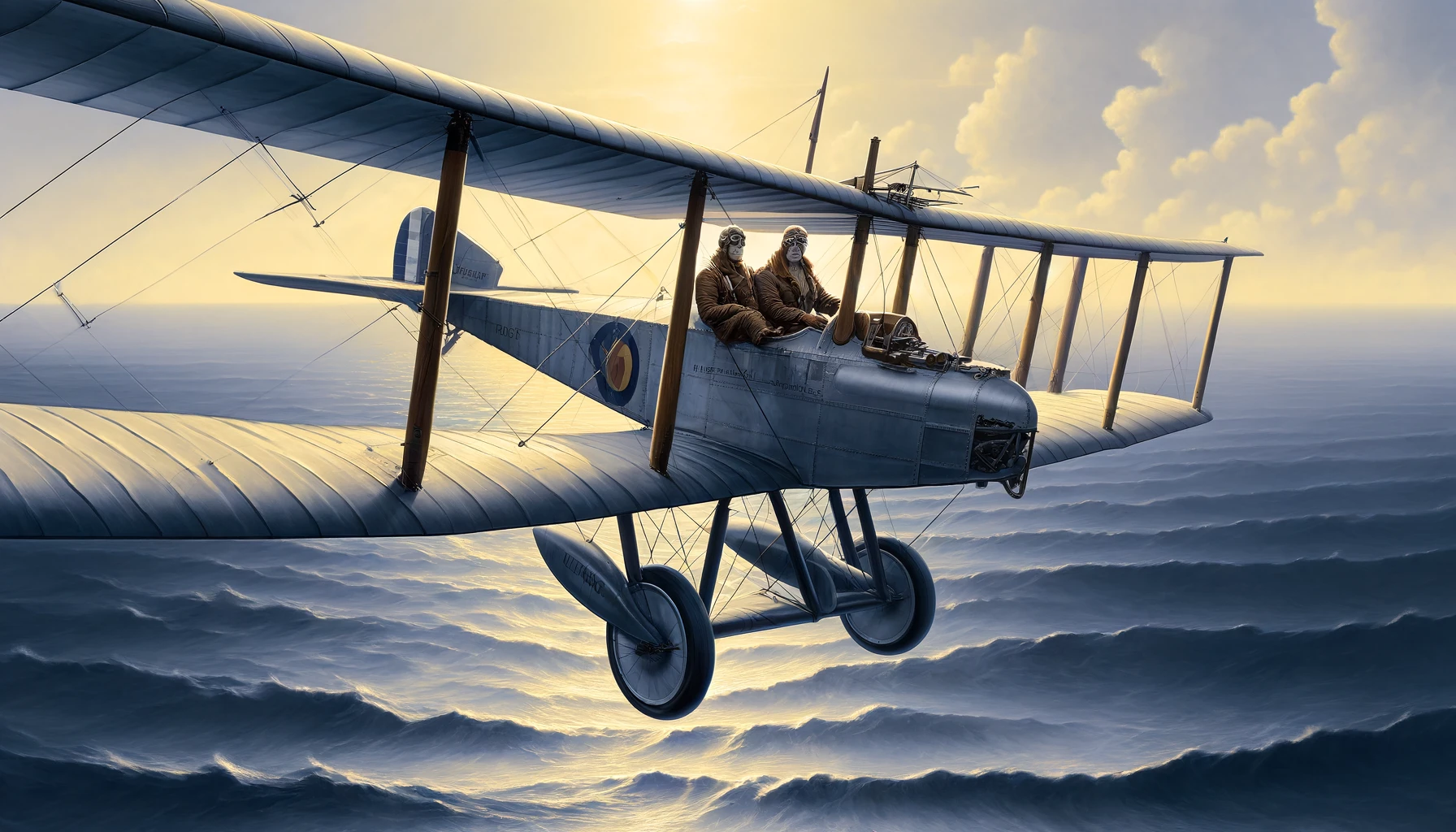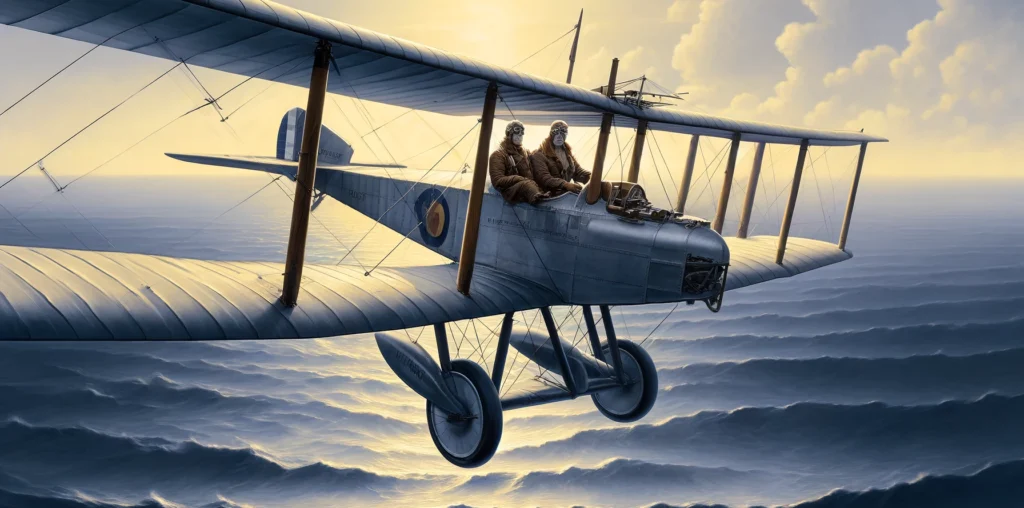In June 1919, British aviators John Alcock and Arthur Brown achieved a pioneering feat by completing the first non-stop transatlantic flight. They took off from St. John’s, Newfoundland, on June 14 and landed in Clifden, Ireland, on June 15, covering approximately 1,890 miles in just under 16 hours. Flying a modified World War I Vickers Vimy bomber, the duo faced numerous challenges, including thick fog, ice, and mechanical issues.
This historic flight demonstrated the potential of aviation for long-distance travel and earned Alcock and Brown a £10,000 prize from the Daily Mail newspaper. Their achievement marked a significant milestone in the development of commercial aviation and opened the door to the era of transatlantic air travel.
The flight was fraught with danger from the outset. The aircraft encountered severe weather conditions, including dense fog that obscured their vision and made navigation extremely difficult. Ice formed on the wings and engines, threatening the plane’s stability and performance. Despite these obstacles, Alcock and Brown’s skill and determination saw them through to a successful landing.
The impact of their flight was immediate and far-reaching. It proved that long-distance air travel was feasible and paved the way for future advancements in aviation technology and international air travel. The courage and pioneering spirit of Alcock and Brown continue to inspire aviators and adventurers to this day.



